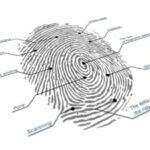The city of Toronto will soon play host to an innovative new art exhibit that responds to the heartbeat of each individual guest. Dubbed PULSE TOPOLOGY, the exhibit is the work of Mexican-Canadian artist Rafael Lozano-Hemmer, and is being put on in collaboration with the Bentway and Exhibition Place.
PULSE TOPOLOGY sounds relatively straightforward in terms of setup. The exhibit will be made up of roughly 3,000 lights that have been suspected from the ceiling of an old storage cubicle. Those lights will resemble a series of inverted mountains, with speakers scattered throughout the landscape to add an auditory component to the experience.
What makes the installation especially unique is its use of touchless biometric technology. PULSE TOPOLOGY will use contactless sensors to monitor a guest’s heartbeat as they walk through the exhibit, and the lights and sounds will change in real time based on the results. Since everyone’s heartbeat is unique, everyone’s experience of PULSE TOPOLOGY will be unique as well.
“PULSE TOPOLOGY offers a visualization of human vital signs after a time of social-distancing and mourning,” said Lozano-Hemmer. “The piece consists of a labyrinth of lights and speakers reacting to the pulse of participants, creating a connective, immersive experience from individual biometrics, reminding us that we are not alone. The work is a memento mori, celebrating our fleeting existence.”
Of course, Lozano-Hemmer is not the first person to use biometrics for artistic purposes. NEC displayed an exhibit that converted iris scans into visual patterns at SXSW in 2019, while Connected Future Labs has suggested that people can use the data from its open source EmotiBit wearable to create interactive works of art.
The space being used for PULSE TOPOLOGY was closed to the public prior to the exhibit, and is located underneath Toronto’s Gardiner Expressway. The exhibit itself will run from October 2 to October 31, with tickets available on a pay-what-you-can basis (with a $5 recommendation).
Source: BlogTO
–
September 17, 2021 – by Eric Weiss








Follow Us